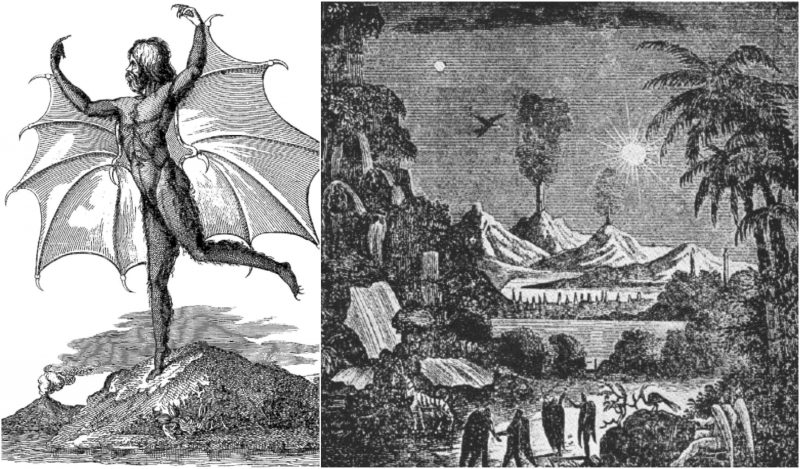Back in 1835, The Sun, a New York newspaper, published six articles about the discovery of a new Moon and civilization on it. The articles were attributed to Sir John Herschel, an English astronomer, scientist, and experimental photographer. The story was probably reprinted from the Edinburgh Courant newspaper.
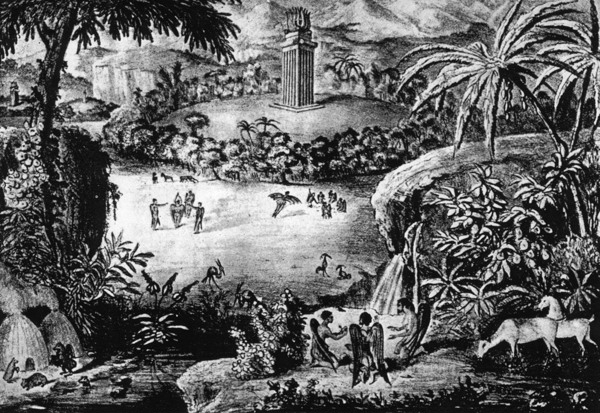
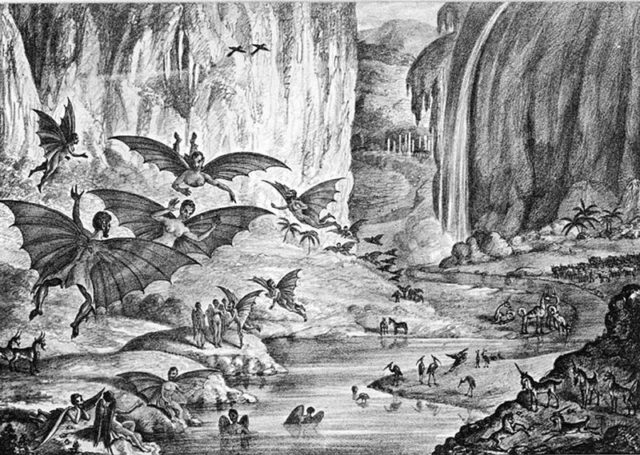
At the time, Herschel was on his travels in South Africa with his wife. His aim was to catalog the stars, nebulae, and other objects in the southern skies. He wanted to extend the work of his father, William Herschel, who was studying the northern heavens.
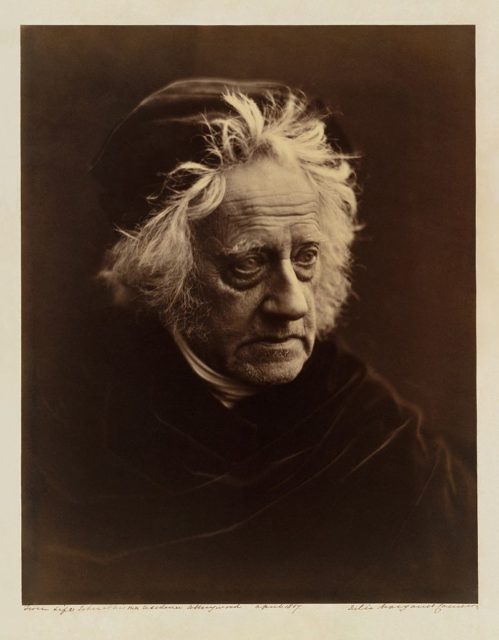
Whatever the Herschels were doing in South Africa, back home, or in Scotland, articles about New Moon and its civilization started appearing in the Sccotish newspaper The Edinburgh Courant, written by Sir John Herschel himself. Fantastic creatures, bisons, goats, unicorns, tailless beavers and bat-like humanoids were described to be living on this new Moon.
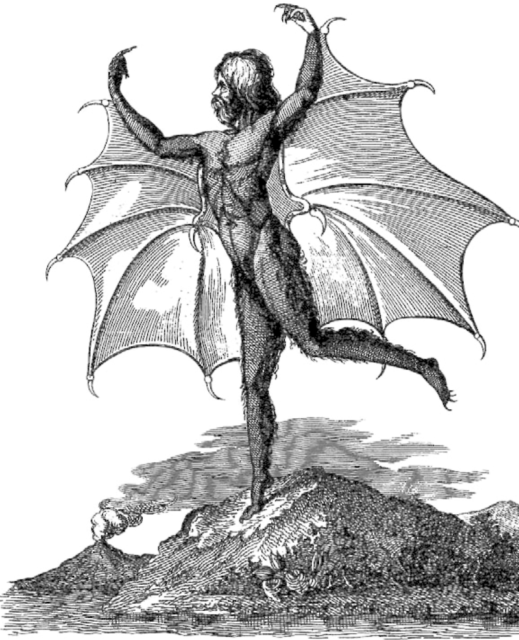
It was said that the observations have been made with a new, experimental telescope, the lenses of which were supposedly burned by the sun. Initially, Dr. Andrew Grant – the assistant of Sir John Herschel was stated as the author, but soon it was revealed that such a person didn’t exist.
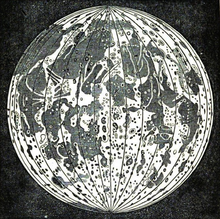
Herschel and his wife arrived in Cape Town in 1834 where they set a private telescope. While Sir John was observing the skies, his wife was making botanical illustrations. Actually, Sir John got so interested in his wife’s work that he helped her and together they made a collection of 131 illustrated plants. The collection was so authentic that 112 of the illustrations were published as Flora Herscheliana in 1996.
In Cape Town, they observed the Halley Comet and also the Eruption of Eta Carinae in 1837. They collaborated and became friends with many scientists who were living in South Africa at the time such as Thomas Maclear, the Astronomer Royal at the Cape of Good Hope. But he certainly wasn’t observing creatures on a newly discovered Moon.
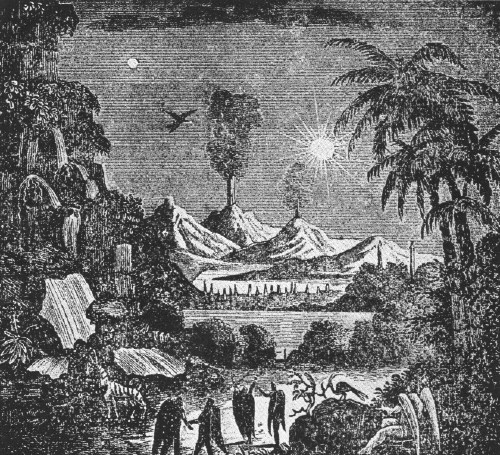
His absence in England made the stories in the Scottish newspaper sound more genuine. However, as a disappointment to many who found the articles true and fascinating, it was soon revealed that The New Moon was a hoax. Even though it was never publically admitted, the articles were probably created by the American reporter Richard Adams Locke, who at the time was working for The Sun.
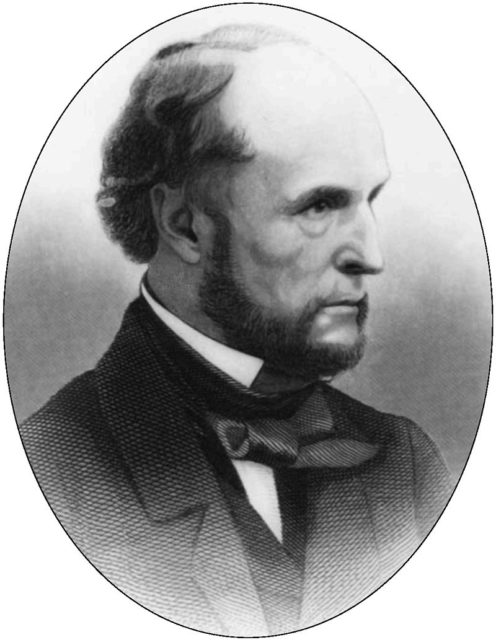
His aim was probably to create a story that would increase the sales of the newspaper and also parody some of the more extravagant astronomical theories at the time such as that of Franz von Paula Gruithuisen and Rev. Thomas Dick. Gruithuisen was an Astronomy professor at Munich University and claimed that there were vegetation zones on the moon and urban structure as well that he had observed.
On the other hand Thomas Dick, also known as “The Christian Philosopher,” counted and claimed that the Solar System has 21,891,974,404,480 (21.9 trillion) inhabitants. Every person with a sober mind and a dose of sarcasm would have been inspired to ridicule such theories. Locke did.
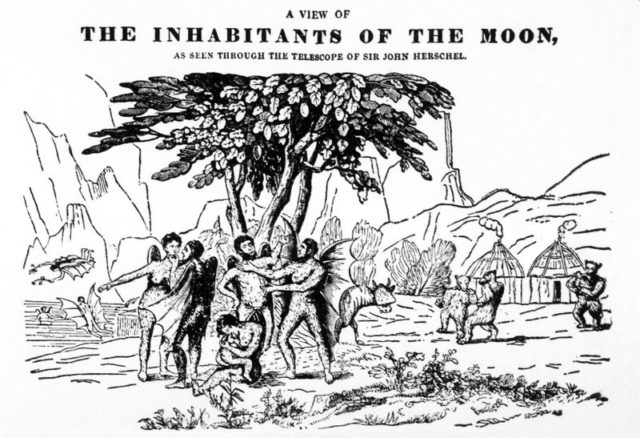
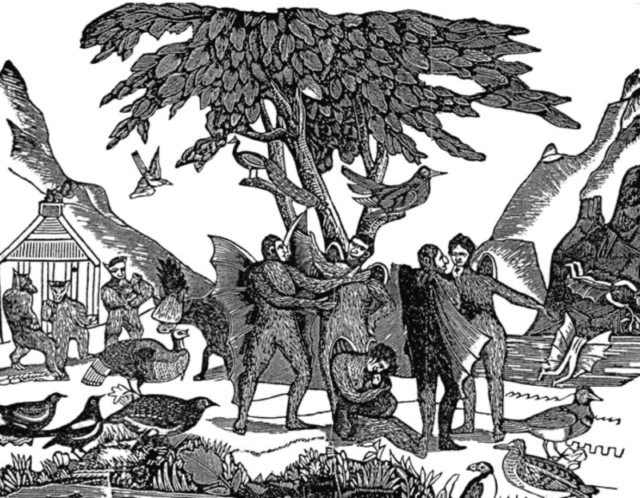
Regardless of being a hoax, the story was loved by the audience and even by Sir Herschel, though he was quite unhappy when he got questioned by people who believed that the story was genuine. Also, The Sun‘s circulation increased after the articles about The New Moon were published and the audience had quite a fun few weeks until it was revealed that the story was a hoax.
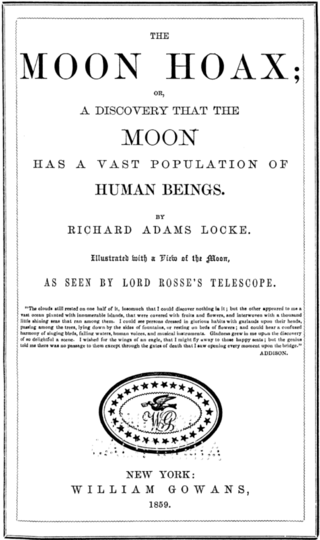
Even Edgar Allan Poe rebelled against the story, but not as a hoax but as plagiarism of his own work. He actually published his own Moon hoax – “The Unparalleled Adventure of One Hans Pfaall” in the Southern Literary Messenger which was later reprinted in New York Transcript, two months before Locke published his story.
Coincidentally, Poe’s editor at the time was Richard Adams Locke.
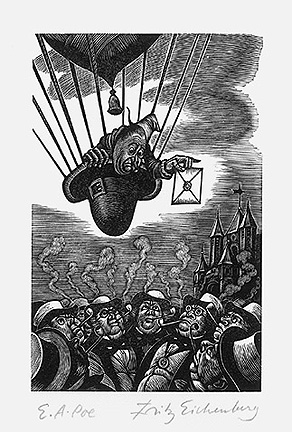
So, it looks like the story loved by so many people including its fake authors was originally created by Edgar Allan Poe, although he was never given credit for the fantastical hoax.
